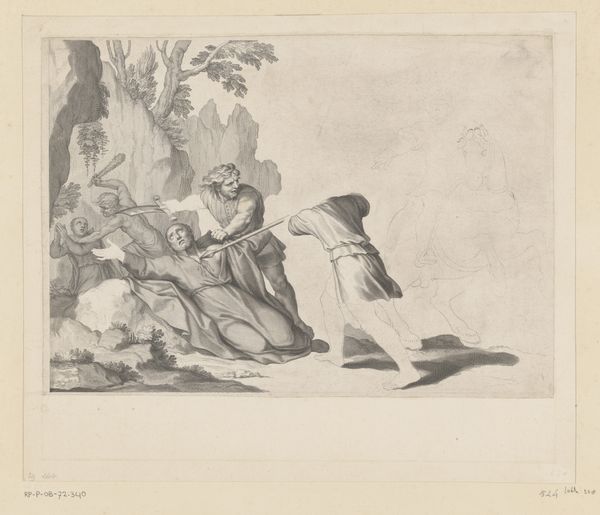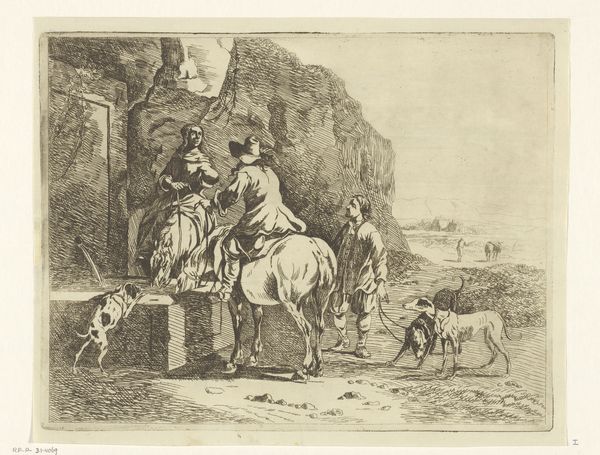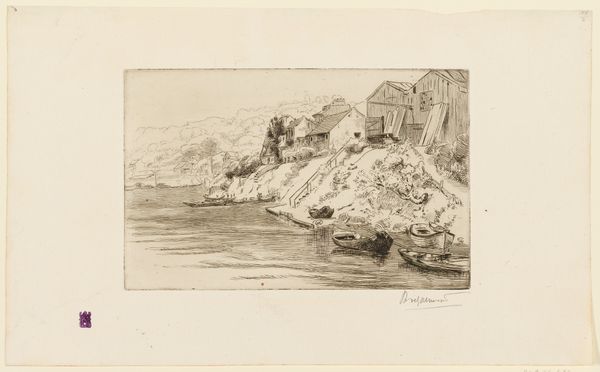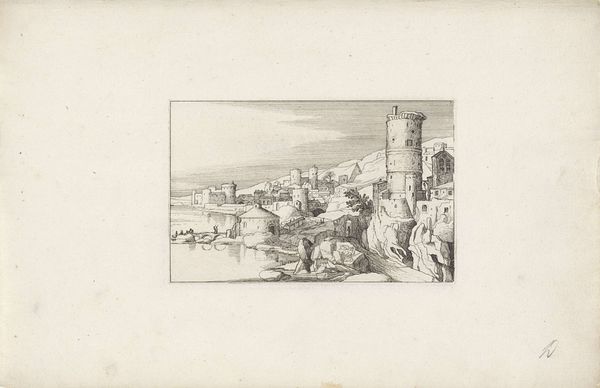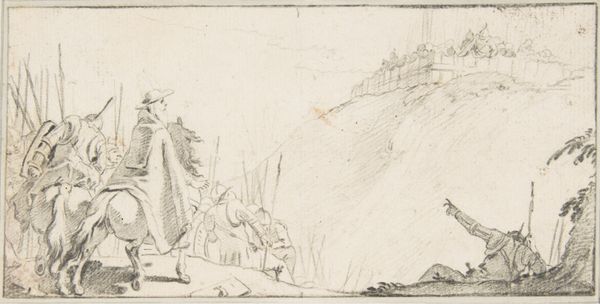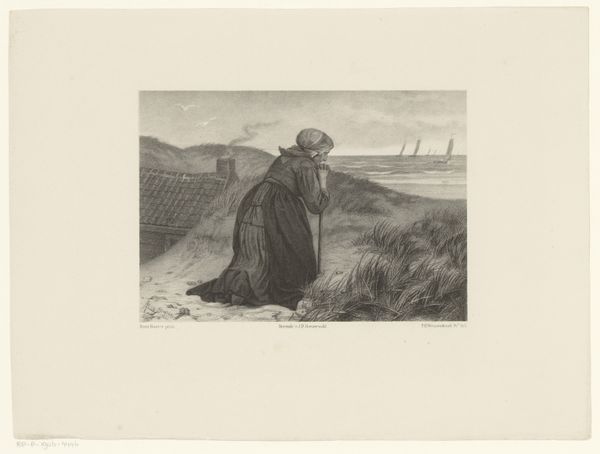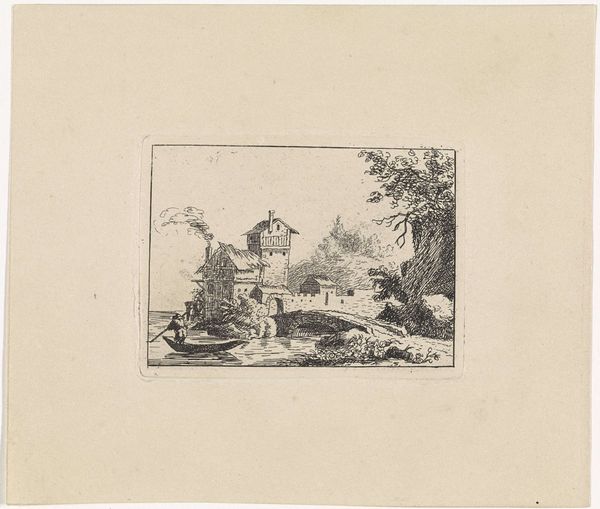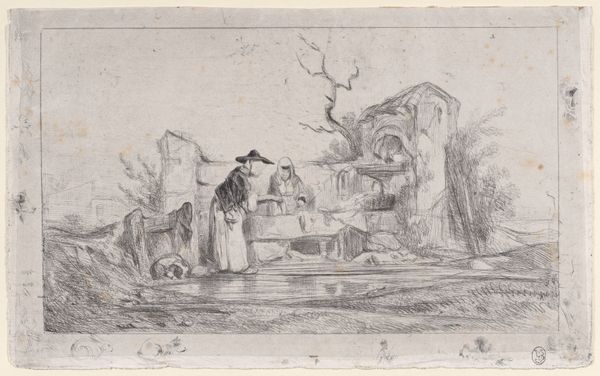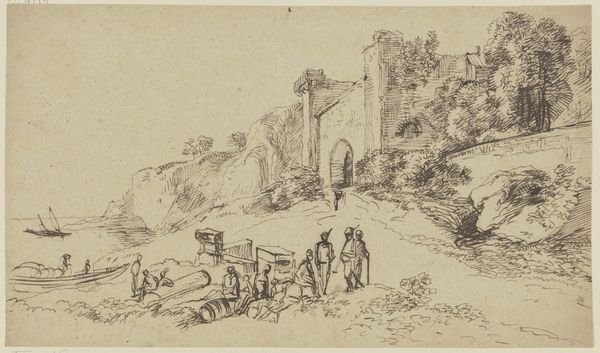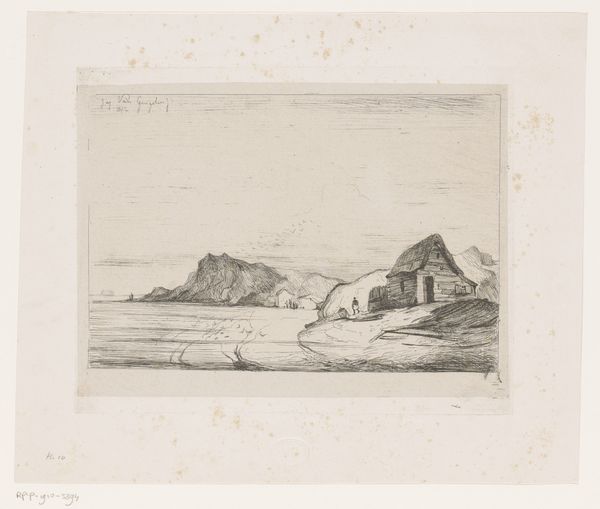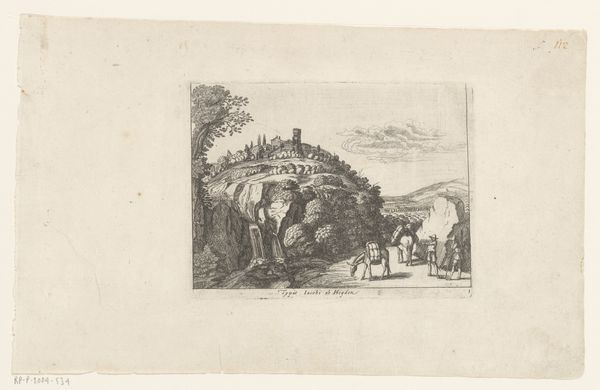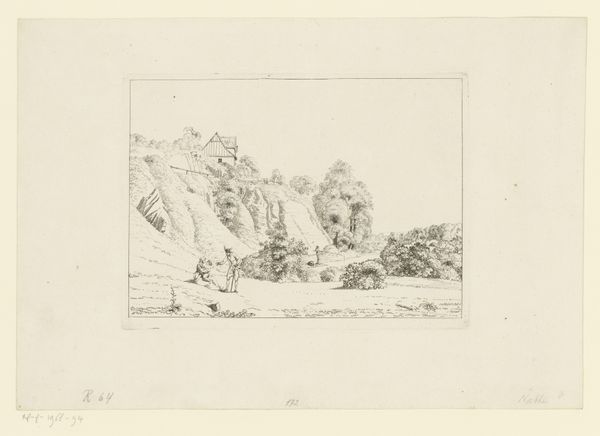
drawing, pencil
#
drawing
#
pencil sketch
#
old engraving style
#
landscape
#
romanticism
#
pen-ink sketch
#
pencil
#
genre-painting
Dimensions: height 101 mm, width 160 mm
Copyright: Rijks Museum: Open Domain
Curator: This delightful pencil drawing is "Two Monks Gazing over the Bay of Naples" by Heinrich Karl Anton Mücke, created around 1840. Editor: Immediately, I am struck by its quiet contemplation, that hazy distance. The contrast is captivating, you have very detailed figures in the foreground which fall away towards very simple and ephemeral atmospheric conditions. Curator: Exactly! Consider Mücke's process; how did his materials influence the end product? Pencil lends itself so wonderfully to both detailed line work and soft gradations. It speaks to Romanticism's broader appeal and the accessibility it held to common folk through reproducible processes and affordable artworks. How was this artwork consumed, I wonder, and what was it up against? Editor: A compelling consideration! Visually speaking, notice how the stark horizontals of the wall and the sea interact with the soft, flowing forms of the monks' robes. The artist is clearly focused on creating a visually harmonious relationship of shapes and forms, even playing the vertical lines in the fabric to echo with the rocks in the middle-ground, lending that touch of solemnity to the entire composition. Curator: And it's through their vantage point that we truly witness Naples' allure; this composition reveals what this landscape means to people like those two cloaked individuals. It gives them an encounter of transcendence, framed by labour and trade across time and distance. This perspective speaks of the socioeconomic dimensions entwined within what looks merely scenic. Editor: From a purely compositional stance, the subdued palette reinforces that contemplative air, doesn’t it? Look at the expert use of tonal variation to create depth, and those minute cross-hatchings in the shadow details--exquisite and economical! The almost spiritual atmosphere that all these elements culminate in is not to be neglected! Curator: Precisely; even that seemingly subdued palette plays into class and industry because art materials in the mid-19th century still faced barriers of entry for marginalized groups; so many had something urgent or hopeful to say! We must acknowledge art not just through its visuals alone, but through who had a right to participate and express what it looks to "overlook Naples," in this case. Editor: Fascinating to ponder those wider implications of art production and access. From my view, engaging with this artwork’s structural essence highlights the core elements that foster its aesthetic impact and symbolic resonance. Curator: Right, while it appears quite placid on the surface, by considering context it spurs thoughts of past and continued socioeconomic structures that shaped art such as this for both creators and viewers then...and now.
Comments
No comments
Be the first to comment and join the conversation on the ultimate creative platform.
